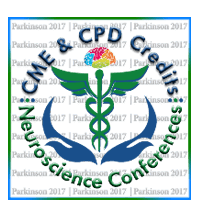
Harish C Pant
National Institutes of Health, USA
Title: Novel insights and therapeutics for Parkinson’s disease
Biography
Biography: Harish C Pant
Abstract
Besides the hallmark pathology of aggregated phosphorylated neuronal intermediate filament proteins it has been now well documented that cyclin-dependent kinase 5 (Cdk5), a critical neuronal kinase in nervous system development, function and survival, when deregulated and hyper activated induces AD, PD and ALS like phenotypes in mice. Under physiological conditions, Cdk5 activity is tightly regulated. The deregulation and hyper activation of Cdk5/p25 induces neuropathology. Thus, Cdk5/p25 becomes prime therapeutic target for AD and neurodegenerative diseases associated with the hyper activation of Cdk5. In order to prevent hyper activation of Cdk5/p25, we have designed several small peptides of p25 on the basis of Cdk5/p25 crystal structure and checked for competition with p25 and thus inhibiting selectively the hyperactivity of Cdk5, we discovered a small peptide (p5) comprising of 24 amino acids, inhibited Cdk5 hyper activation. The modification of p5 to TFP5 crosses blood brain barrier (BBB), which was tested in a transgenic AD, PD & ALS models. Post TFP5 injections in AD, PD and ALS model mice displayed significant reduction in Cdk5/p25 hyperactivity, neuroinflammation and hyperphosphorylation of cytoskeletal proteins, along with various behavioral rescues. TFP5 does not inhibit normal Cdk5/p35 activity, and therefore has no toxic side effects. In addition, treated mice rescued synaptic dysfunction and a reduction in phospho-neuronal intermediated neurofilaments and neuronal cell death. These results indicate that TFP5 and TP5 have a potential to be a therapeutic target for AD, PD and ALS neurological diseases.

